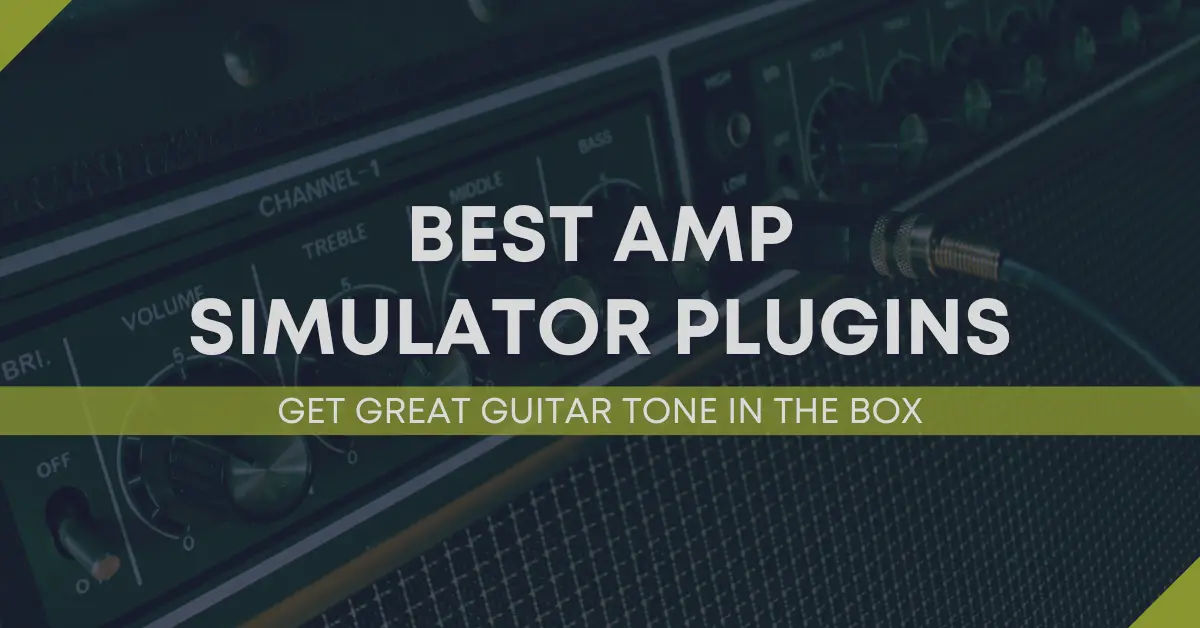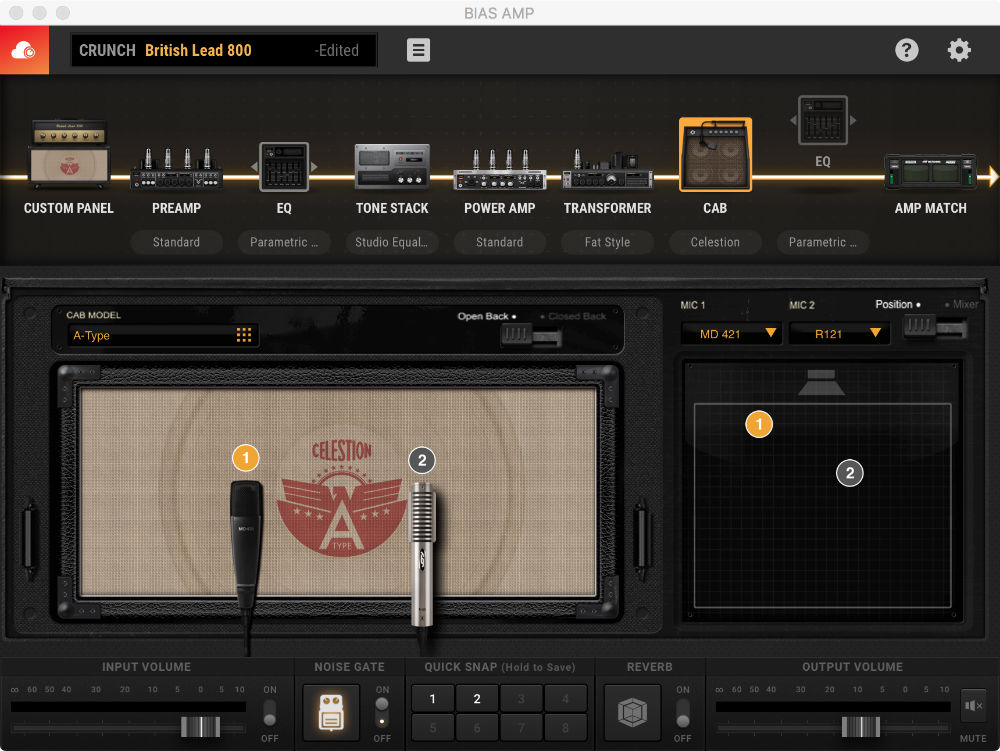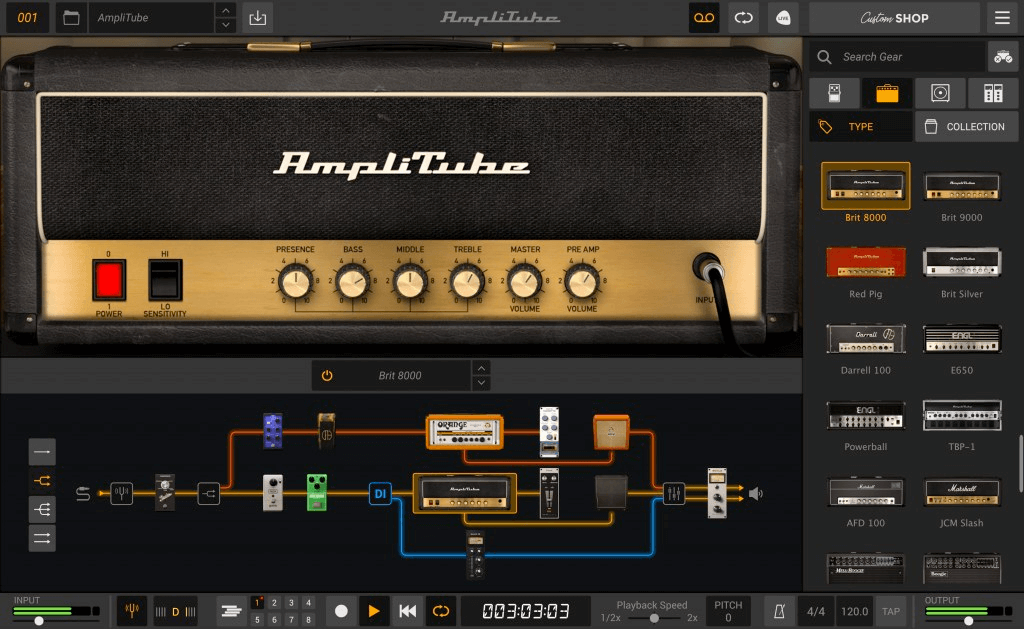
Just because amp sims are convenient to use doesn’t mean they’re an easy purchase. You still need to apply the same level of scrutiny you apply when buying regular gear. In this post, we’ll check out some of the best amp simulator plugins to help you find one that’s good enough to join your virtual rig. Let's dive in!
Included in this guide:
| Image | Product | Features | Price |
|---|---|---|---|
Best Overall  | Line 6 Helix Native Guitar Amp & Effects Plugin
| 5 | Check Price |
Runner-up  | Positive Grid Bias Amp 2 Elite
| 4.9 | Check Price |
Top Pick  |
| 4.8 | Check Price |
Top Pick  | PreSonus Ampire Modeling Amp and Pedalboard Plugin
| 4.6 | Check Price |
Lowest Price  |
| 4.5 | Check Price |
Related Article: The Top 5 Best Audio Interfaces For Guitar (2024)
Helix Native can be intimidating at first glance, but it’s an incredibly powerful simulator. Line 6 brings the same top-tier accuracy of the Helix modeling family to the plugin system. For one, you have models from Line 6 originals, like crunch-toned Ventoux. However, you’ll also find picks based on classic and modern amps from other manufacturers. For instance, the WhoWatt 100 is modeled after the Hiwatt DR 103.
One huge plus here is the tonal consistency between recording and live performances. Line 6 offers seamless compatibility between Helix Native and other lineup products. This way, you can customize amps on the plugin in the comfort of your studio, save them as presets, and then take them to the stage using the Helix Floor.
The second release of Bias Amp features emulations of iconic hardware, like the Matchless DC-30 to the Hiwatt DR 103. However, the plugin shines as a virtual amp designer. You can use it to mix and match tubes, tone stacks, cabinets, and even transformers to create a custom amp.
Those who don’t have the time to test different components can use the Amp Match feature to recreate the tonal palette of an imported audio sample. If you don’t have samples, you could resort to Positive Grid’s ToneCloud for inspiration. There, you’ll find 100 presets (10–15 in each category: bass, crunch, blue, etc.) from a bunch of bands from all around the world. Think Van Halen and ZZ Top.
IK Multimedia offers a free, expandable guitar amp and FX simulator/ That would be the AmpliTube 5 CS with its 41 models. However, the 8-track recorder Max version is the best pick in the lineup despite being the most expensive.
The maxed-out version boasts more than 430 gear models between amps, stompboxes, cabs, mics, and so on. Of course, it’s also possible to download other users’ presets from ToneNET instead of stacking components yourself.
Either way, you’ll have the top panel for tweaking the equipment. Meanwhile, the right-hand panel is where you can browse the gear selection. Then, you can view the chain on the base panel at the bottom of the UI, which is sleeker and more powerful than the previous release and supports up to 57 simultaneous FX models.
Rather than flood the Studio One stock plugin with models, PreSonus went for a few polished choices. So, they used the same tech in their famous Fat Channel analog-emulator plugins in Amipre’s virtual circuitry. If you want high gain, the classic MCM800 or the Dual Amplifier would be the way to go. Besides those two, there are picks for American cleans, ‘70s British leads, and in-your-face bass.
Stompbox emulations, on the other hand, are powered by State Space Modeling tech that keeps the tones as vibrant as possible for this price tag. But, this mainly applies to five of the 13 included stompboxes (Big Fuzz distortion, ‘80s FAT, MP Ninety phase-shifter, 4-in-1 PAE Chorus, and the overdrive Tube Dreamer pedal).
Limited amp selection
With a simplistic interface and a budget-friendly price tag, Voltage Amps is a great pick for beginners. Yet, it’s still a powerful simulator. For one, it has over 400 presets, many of which were created by famous artists, including Nirvana’s Butch Vig and the Grammy winner Jeff Ellis.
The first guitar amp on the list is Royal-X, suitable for the late ‘90s to modern-day sounds. Next in line are the aggressive Arrgo, the ‘80s Blue Flame, and the stadium-rock-suitable Arena. Finally, we have the versatile Silverado. But regardless of which amp you choose, the controls are going to be the same.
Related Article: Fender Play Review: Online Lessons For Aspiring Guitarists
Yes! If you’ll be working live often, something with powerful integration, like the Helix Native, can be a great choice. Meanwhile, most simulators with large libraries would do the trick if you’re working mainly at home.
When choosing an amp simulator plugin, consider factors such as amp and pedal model variety, ease of use, tone customization options, and compatibility with your DAW. Additionally, look for plugins that offer features like impulse response (IR) loading for realistic cabinet emulation.
Amp simulator plugins offer several advantages, including cost-effectiveness, portability, and convenience. They allow you to access a vast array of amplifier and pedal models without the need for physical gear. Plus, you can record and tweak your guitar tones directly within your DAW.
No, while many sims come with matched cabinets, you don’t have to use the set together. After all, guitarists swap physical cabinets to expand their tonal palette. So, you can do the same on the virtual rig!
No, not necessarily. Some plugins can work as standalone tools. The Bias Amp 2 and the 8-track AmpliTube recorder are good examples.
Now that you know what our favorite guitar amp simulator plugins are, the question is which one are you going to get? Helix Native’s effortless integration and comprehensive amp/effects collection make it well worth the money. Meanwhile, the more affordable Bias Amp 2 Elite’s strength point is amp design. But Voltage Amps by Waves, with just five guitar amps, checks both the ease of use and the price boxes.
If you found this guide helpful, please consider subscribing to our blog for more music production tips, product reviews, and buying guides. Also, you can support new content by contributing to our tip jar.
"Some of the links within this article are affiliate links. These links are from various companies such as Amazon. This means if you click on any of these links and purchase the item or service, I will receive an affiliate commission. This is at no cost to you and the money gets invested back into Audio Sorcerer LLC."